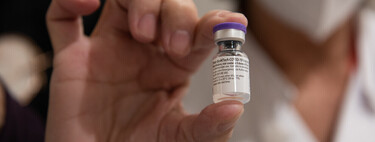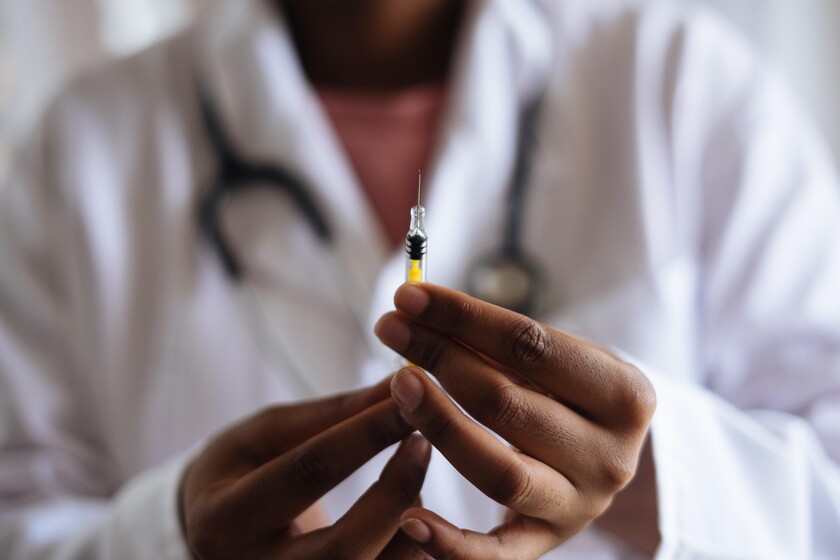The possible link with rare cases of thrombosis has forced the suspension of the COVID-19 vaccination with AstraZeneca in Spain to those under 60 years of age, which moves to a scenario of uncertainty to many people who expected to receive the second dose in the next few weeks.
Although a decision has not been made on the strategy to be followed from now on, the possibility of combining different vaccines, that is, to put a second dose of vaccine different from the vaccine of the first dose.
Theory and results in animals
The double dose complicates immunization plans against single-dose vaccines, as announced by other laboratories such as Johnson & Johnson and its Janssen vaccine, recently arrived in Spain. Not only because the administration of a vaccine could be paralyzed, something natural in this first period of pharmacovigilance in which we find ourselves, but because stocks could be exhausted by having chosen to put only first doses waiting for new shipments of the same vaccine.
The ability to mix and match vaccines could make vaccination programs more flexible, speeding up the process and reducing the impact of any supply chain disruptions.
With the stoppage of the AstraZeneca vaccine for certain age groups due to the possible risk of suffering thrombi, the Spanish Ministry of Health has opted for caution in accordance with current WHO recommendations, which has stated that we still do not have sufficient data to recommend the combination of vaccines and that it is advisable to wait for the results of clinical trials.
Theoretically, indeed, mixing vaccines may be more effective than using the same vaccine in a single dose. For example, experimental HIV vaccines are often based on this strategy. In fact, some researchers also think that combining two vaccines could strengthen the immune response by taking advantage of the best characteristics of each. Animal studies suggest that a heightened immune response is possible. However, when it comes to vaccines to combat COVID-19 in humans, we are still in the field of theory. Experimental endorsements are necessary.

Another option, instead of mixing vaccines, would be to limit ourselves, for example, to using a single dose of AstraZeneca, which is already 70% effective, and not administering a second dose. This route is not the most suitable because it reduces the effectiveness, but it is also the most conservative when it comes to unwanted side effects. That waiting time can also be important until you have more data on the safety of mixing vaccines.

Health experts generally agree that combining vaccines is an immune-safe strategy, but clinical trials must run their course. In some cases, you can wait a few weeks for these results, but there are countries that prefer to make decisions in light of their particular epidemiological situation.
France and Germany, the pioneers
Most countries are waiting for the results of clinical trials on mixing vaccines before making a decision, and others are postponing it because they are still discussing whether their particular epidemiological situation forces them to adopt this strategy without yet having all the data.
For its part, France has already made the decision to vaccinate with a second dose of Pfizer or Moderna (both use messenger RNA technology) to a total of 533,000 people who had previously received a first dose of AstraZeneca (a weakened adenovirus from a viral vector). In this case, a space of 12 weeks is advised between these first and second injections in these cases.

Germany has followed a similar path. The German Vaccine Committee, as of April 1, has recommended that people under the age of 60 who had received an injection of AstraZeneca should opt for a different vaccine for their second dose.
Norwegian authorities are also awaiting the results of a British trial launched in February to explore the combination of doses of the Pfizer and AstraZeneca vaccines.
China, for its part, is taking the path of mixing vaccines to increase the low efficacy of its own, that of Sinovac and Sinopharm. In March, the Department of Medicine at the University of Hong Kong announced that it was recruiting participants for a trial that would combine doses of the Sinovac vaccine and the Pfizer vaccine.

The Centers for Disease Control and Prevention maintain that the safety and efficacy of mixing these products have not been evaluated. To be completely sure that these mixtures are effective and safe, we will have to wait. The UK started a trial in February that specifically seeks to mix the AstraZeneca-Oxford vaccine with the Pfizer-BioNtech injection. The findings are not expected to be available until the summer.. Separately, trials are also underway looking at a combination of the AstraZeneca-Oxford and Russia’s Sputnik vaccines.
In principle, It seems that theoretically no adverse side effects should be expected when mixing vaccines. If there were, in some cases, the strategy would be paralyzed (remember that every day we stop vaccinating, people die). The good news, too, is that all these vaccines encode the same protein, the S protein (from English “Spike” or spicule) of SARS-CoV-2, so everything seems to indicate that the results will be positive.
Be that as it may, any strategy must be monitored day by day, depending on the new data that comes our way, to get closer and closer to the desired herd immunity.
